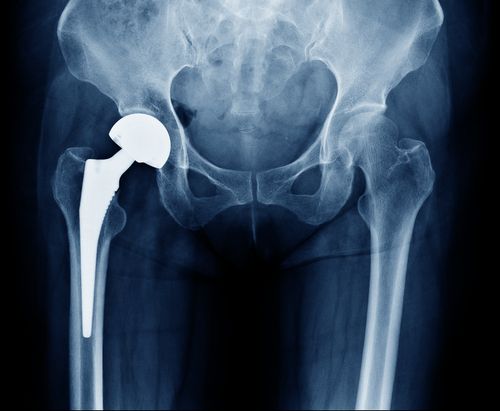 Written by Hulet Smith, OT
Written by Hulet Smith, OT
Between 300,000 to 400,000 hip replacement surgeries are performed in the United States each year. This procedure is performed in order to replace the patient’s own hip joint with one made from metal and plastic components, and is intended to relieve pain and make walking easier. The final effect of this surgery can be life-changing for someone once they recover fully, but the recovery process can be really challenging if you’re not prepared or don’t make the proper adaptations to your home and living space.
The usual fear and pain of surgery are challenging enough, but when it comes to hip surgery recovery, the risk of falling can prove incredibly hazardous and may ruin the surgery you’ve already gone through so much trouble to have performed. Planning ahead and installing various equipment and caregiving assistance is crucial to preventing accidents. Thankfully, there are a few simple tips and tricks that can make the process so much easier, and help you relax, heal, and recover quickly and safely.

In order to ensure a safe recovery, it’s important to make sure that your home is safe and easy to move around in. The best way to do this is to:
Add nightlights or brighter bulbs to existing fixtures for better lighting if you need it, and enlist the help of your friends or family members to make sure that all walkways stay clear until you heal enough that falls are less of a risk. There are also a number of fall prevention devices like non-slip socks and stability devices that might make a huge difference in your feelings of safety.
Equally important to fall-proofing your home is the ability to ask for and receive help when you need it. You will likely be sore and unable to move very well for the days and weeks following your surgery, and it’s important that you don’t push yourself too hard. You need to heal slowly without putting unnecessary stress on your joints, and in order to do that, you have to be honest with yourself and with whoever will be caring for you about when you need assistance.
When you first return home from the hospital, it’s important that you be very aware of your body, posture, and the amount of support you need. Don’t push yourself too hard at first - it’s important that you heal properly. At first, you may need supportive devices like a walker or cane to move around safely. But once muscle tone increases and pain decreases, you’ll be able to start walking independently again.
Some postural precautions to be aware of include not crossing your legs, which can stretch the hips too much, and not bending the angle of your hips too far. Instead, use a safer elevated seat, sleep with a pillow between the legs, and avoid turning your feet inward, which can put strain on the hip joint.
Fall prevention all around the house is important, of course, but the bathroom is somewhere you’ll most likely visit multiple times each day and it houses a number of potential dangers to be aware of.
After surgery, you’ll most likely be stiff and sore due to inflammation and scar tissue formation. But scar tissue can tighten the soft tissue around the hip joint, and if it does you may have difficulty bending, walking up and down stairs, and even sitting in a chair. To prevent this from happening, it is very important that you begin light activity as soon as possible to help strengthen the muscles, encourage blood flow, and decrease fluid build-up, otherwise, you may find yourself having to go through intensive physical therapy to correct problems.
Blood clots in the large veins in the pelvis and leg often occur after a hip replacement. To help minimize your risk of clots, doctors may often recommend that you use compression stockings or other compression garments. They may also place you on blood thinning medications to reduce your risk of clotting and help everything move smoothly.
As much as you may want to slack off on eating well while you’re stuck in recovery, it’s important that you fight that impulse. Good nutrition from whole, natural foods, grains, probiotic-rich foods, vegetables, sources of iron and protein, fruits, and leafy greens will not only give your body the nourishment it needs to heal properly, but will also help fight weight gain which can put more stress on your new hip and make it harder to get back to your normal lifestyle.
For more help with your hip recovery, Rehabmart carries a number of post-surgical hip devices that can help ease the range of challenges you may encounter during recovery. These even include a few total hip replacement kits that come complete with everything you need to make a speedy recovery. To read more about hip replacement, recovery, and the best ways to prevent falls, check out our full catalog of articles on Caregiver University.

Co-founder/CEO of Rehabmart, Pediatric Occupational Therapist, husband, and father. Passionate about connecting special needs kids with superb nutrition, sensory integration, and complementary health strategies. Excited about Rehabmart's mission to become the premier online educational platform which empowers caregivers by spotlighting innovative devices and interventions to achieve optimal patient response and recovery.